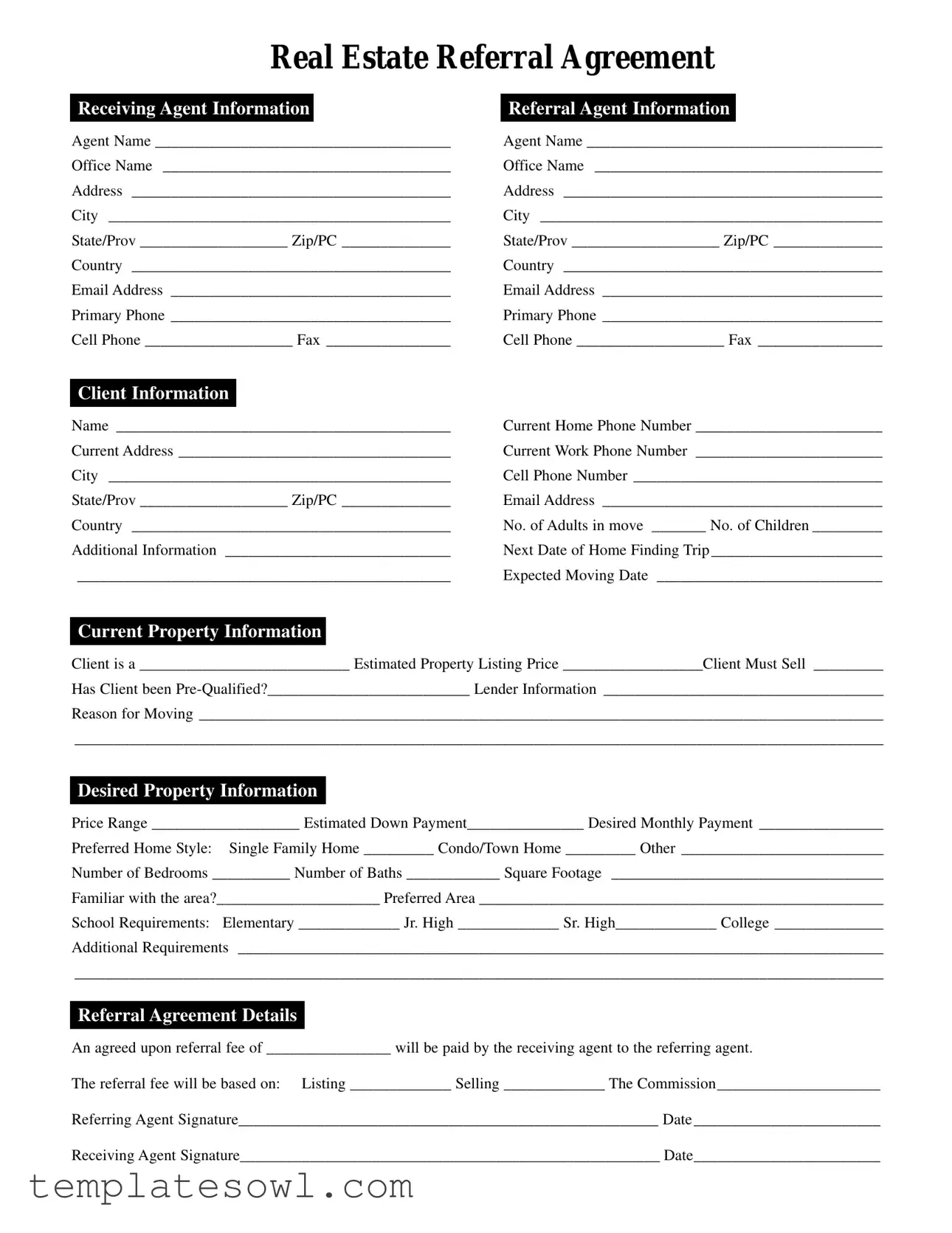What is the purpose of the Real Estate Agent Referral form?
The Real Estate Agent Referral form is designed to facilitate the referral of clients between real estate agents. When an agent has a client looking to buy or sell property, and they want to refer that client to another agent with expertise in a specific area, this form helps formalize that arrangement. It specifies the agents involved, the client’s information, and the agreed-upon referral fees.
Who needs to fill out the Real Estate Agent Referral form?
Both the referring agent and the receiving agent need to complete the form. They must provide their respective information, including office details, contact numbers, and signatures. This ensures that all parties are in agreement regarding the terms of the referral and the related fees.
What information is required about the client?
The form requires comprehensive details about the client. This includes the client’s name, current and work phone numbers, email address, and home address. Additionally, it captures information about the client's moving requirements, such as number of adults and children, desired property specifics, and any special considerations related to schools or areas.
How is the referral fee determined?
The referral fee is negotiated and specified within the form. It can be based on either the listing or selling commission, depending on the nature of the transaction. The agents will agree on a specific dollar amount or percentage to be paid to the referring agent, making this a clear part of the agreement.
What should I do if my client has not been pre-qualified for a loan?
If your client has not been pre-qualified, it is important to indicate that on the form. You should also encourage the client to seek pre-qualification as it strengthens their position in the buying process. You can provide resources or refer them to lenders listed in the form to assist them.
Can additional information be included for the client's needs?
Yes, there are sections in the form where you can add additional information regarding the client’s requirements and expectations. This could encompass specific preferences in property style, location, or any unique needs that the client may have. Clear communication can enhance the referral experience for all parties involved.
Is it necessary for both agents to sign the form?
Yes, both the referring agent and the receiving agent must sign the form. Their signatures confirm mutual agreement to the referral terms and conditions specified. This legally binding act ensures accountability and clarity among the agents regarding their respective responsibilities and the referral fee structure.
What should I do after filling out the Real Estate Agent Referral form?
After completing the form, both agents should keep copies for their records. It is also advisable to follow up with the client to ensure that they are informed of the referral and the next steps in the process. Maintaining open communication with all parties can lead to a smoother transaction and a positive experience for the client.


 Client is a ___________________________ Estimated Property Listing Price __________________Client Must Sell _________
Client is a ___________________________ Estimated Property Listing Price __________________Client Must Sell _________ Price Range ___________________ Estimated Down Payment_______________ Desired Monthly Payment ________________
Price Range ___________________ Estimated Down Payment_______________ Desired Monthly Payment ________________ An agreed upon referral fee of ________________ will be paid by the receiving agent to the referring agent.
An agreed upon referral fee of ________________ will be paid by the receiving agent to the referring agent.